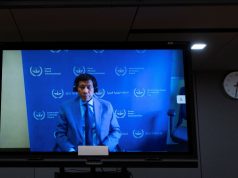Editor’s note: Cesar Polvorosa Jr. is a business school professor of economics, world geography, and international business in Canada. He is also a published writer in economics, business, and literature. The first part of this piece came out on 15 June 2014.
The strong though gradually declining birth rates of the Philippines (1.81 percent) and India (1.25 percent) make them well positioned in the next several years to benefit from having a bigger working age population.
This has momentous implications for the economies of the Philippines and India as this means an abundant pool of work force that is available for industrial operations. In fact, the UN has projected that by about 2028 India will overtake China as the most populous country in the world.
Thus, in contrast, labor shortages have begun to affect China and had been a major issue for years in Japan, Canada, and Western Europe. Availability of a huge labor force is however a double-edged sword. Governments and historians know that a prescription for socio political tumult is to have large numbers of disillusioned, angry, jobless young men.
By the time that the industrialized countries shifted to services/knowledge economy their societies had been transitioning to stage 4 of the demographic transformation model (i.e. steep declines in birth rates and death rates leading eventually to declining populations). Thus, even as they grapple with issues of the “hollowing out” impact of deindustrialization and specific regions and industries were impacted (e.g. the “rust belt” of Northeast USA) they are not confronted by massive unemployment distinct to young population dominated societies. Furthermore, they face the challenge of economic rebalancing when they are already prosperous societies.
In contrast, developing countries like the Philippines and India are deindustrializing at low income levels while having a large labor force pool leading to poor employment generation and what Dani Rodrik of Princeton University refers to as the perils of “premature deindustrialization.” Thus, the failure to realize the full labor generating potential of manufacturing may contribute to the Philippines and India becoming mired in a “middle income trap” and ending up with a huge and disenfranchised underclass.
The industrial sector comprises 32 percent of Philippine GDP and is dominated by processing and assembly operations in the manufacturing of electronics and other high-tech components. Likewise, with a little more than half of the population in rural areas the Philippines can make rapid strides towards inclusive growth with a revitalized agricultural sector. Agriculture employs 32 percent of the Filipino workforce as of 2013 (World Bank) and accounts for around 11percent of Philippines GDP. Agricultural production focuses on coconuts, pineapples, rice, and sugar.
For India, industry accounts for 17 percent of GDP and employs 22 percent of the total workforce. The Indian industrial sector underwent significant changes as a result of the economic liberalization reforms of 1991, implemented privatization and removed import restrictions, and brought in foreign investments. Indian agriculture and allied sectors like forestry, logging, and fishing accounted for 17 percent of the GDP in 2012 and employed 51 percent of the total workforce.
Emphasizing on manufacturing and agriculture to complement the strengths in services will enable the economies of the Philippines and India to offer the most number of employment opportunities, broadening and deepening the sources of growth in the economies, and thus reduce their vulnerabilities and realize their competitive advantages. Ultimately, competitive manufacturing and agriculture will boost the export performance of the Philippines and India and enhance the attainment of inclusive growth and development.
Good governance imperative
The Philippines and India (the world’s biggest democracy) are also similar in their politics. Both countries are rowdy democracies characterized by personality based politics and the proliferation of actor politicians. Good governance and corruption issues had always been of serious concern in both the Philippines and India. As I explained in my article on Philippine economy and good governance (The Manila Review Issue 4) sustained economic growth in the Philippines had been stymied by crisis of governance that has contributed to boom and bust cycles during the past decades. In India’s case, corruption and governance issues are major problems revolving around red tape, bribery, and the Licence Raj.
It is noteworthy that in the 2013 Corruption Perception Index of Transparency International both the Philippines and India were ranked 94 out of 177 countries with the same score of 36.
New PM Narendra Modi campaigned on a platform of good governance and the economic performance of his home state of Gujarat during his tenure as chief minister. His message resonated with the aspirations of Indians for clean government and sustained progress as Mr. Modi’s Bharatiya Janata Party (BJP) ended decades of Indian National Congress rule with a stunning electoral victory.
Likewise, President Noynoy Aquino campaigned on a promise of good governance i.e. of a clean and honest government as the way to achieve sustained economic progress. The impressive economic gains since 2010 are being cited as a validation of the effectiveness of this approach.
Regional geopolitics
The Philippines and India have a lot of areas to both compete and cooperate in business and the economy relying on their respective strengths.
It is noteworthy that the there is an alignment in the strategic interests of both countries as well. In strengthening their own geopolitical position in the region both the Philippines and India will realize strategic advantages through enhanced military cooperation and exchanges.
A rising Indian economy with its greater military capability will help to preserve the balance of power in Asia.
India itself realized this when it pursued its Look East Policy with the objective of countering China’s expanding clout in the region by cultivating closer economic and strategic relations with Southeast Asian countries.
These various cooperative arrangements between India and Southeast Asia range from training exercises with Singapore to the provision of equipment and expertise to Myanmar and Vietnam.
The road ahead
The similar characteristics and concerns of the Philippine and Indian economies suggest the coveted economic tiger status can be attained through similar multi pronged strategies. Detailed road maps are beyond the scope of this article and neither is this intended to be exhaustive but in outline form the major approaches both countries can focus on are:
- Good governance that emphasizes transparency, clear accountabilities, honest government, rules-based system, and a level-playing field.
- Liberalization of the economy that encourages FDIs with less restriction on foreign ownership in local industries, and opening oligopolies to competition.
- Significant infrastructure improvements particularly in energy and power generation, airports, highways, mass transit system, and farm-to-market roads to facilitate response of suppliers to signals of increased demand and make investments attractive.
- Tapping the savings of the huge diasporic communities to channel foreign savings and investments into local SMEs and build up and encourage local entrepreneurial ventures.
- Rebalancing to manufacturing and agriculture to maximize the employment potential of new ventures that will help to bring down the significant unemployment levels.
- Greater orientation to exports to tap business opportunities from international markets and maximize growth potentials with strengthened manufacturing and agriculture sectors.
What does the future hold for the Philippine and Indian economies? Assuming that both the Philippines and India are able to resolve their similar structural issues, economic concerns and vulnerabilities they enhance their chances of achieving inclusive growth and sustainable development within the next few decades and attaining the coveted economic tiger status.
The Philippine and Indian economies are ranked the 40th and 10th largest economies respectively in the world (2013 IMF) and widely acclaimed as among the fastest growing economies. Based on present trends and expected future developments, HSBC projects that by 2050, the Philippines will be the 16thlargest economy in the world with per capita income of $10,893 (constant 2000 USD). India on the other hand will become the 3rd biggest economy just behind China and United States with per capita income of $5,060 (constant 2000 USD). Altogether, a projected total of about 155 million Filipinos and 1.61 billion Indians will participate and benefit from economic growth and development with significant positive impacts across the global economy arising from deeper and more extensive trade and investment linkages.










